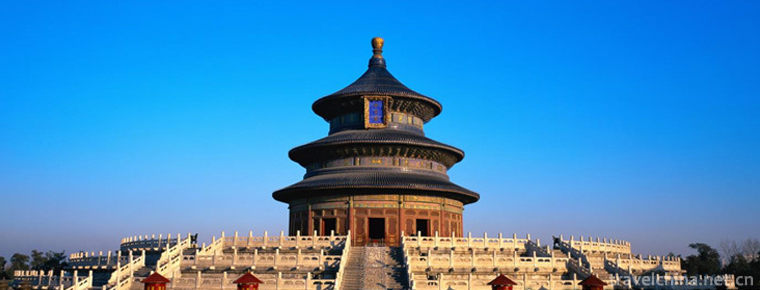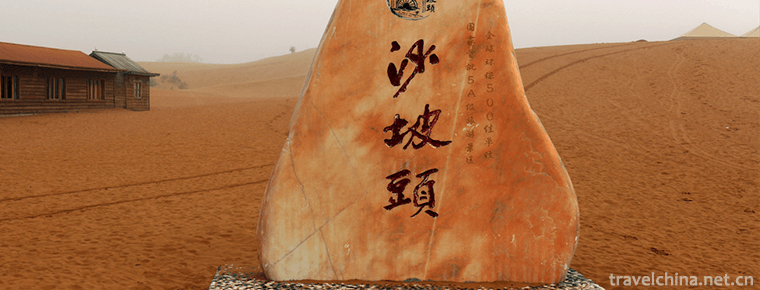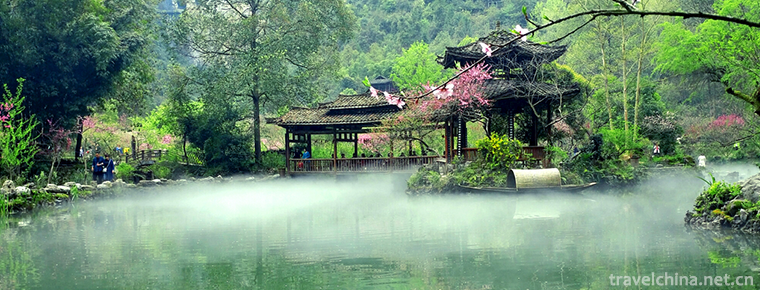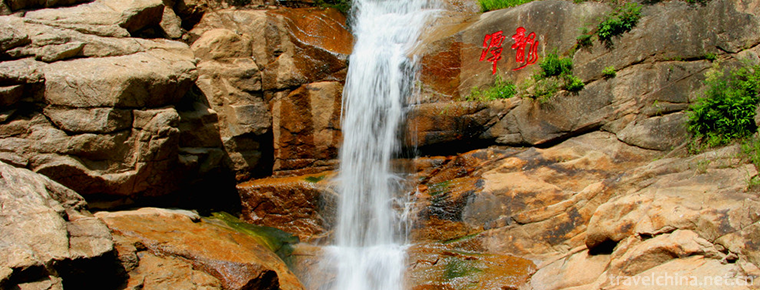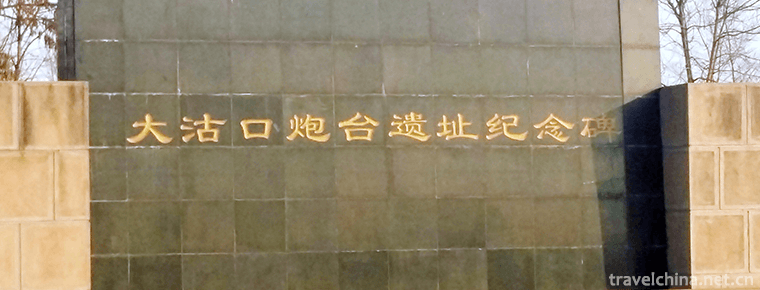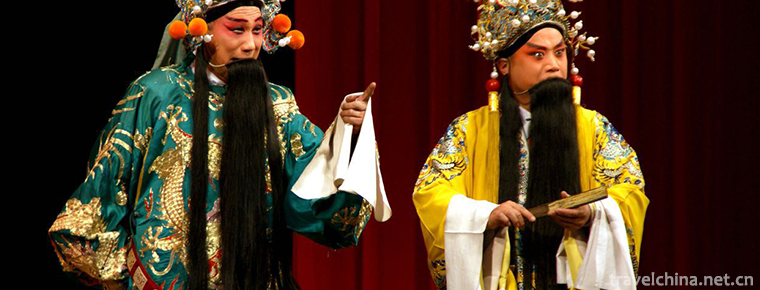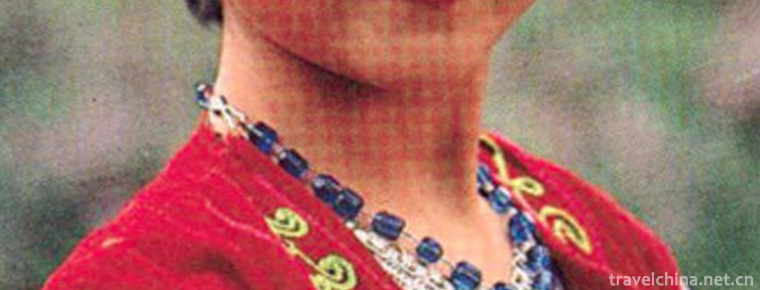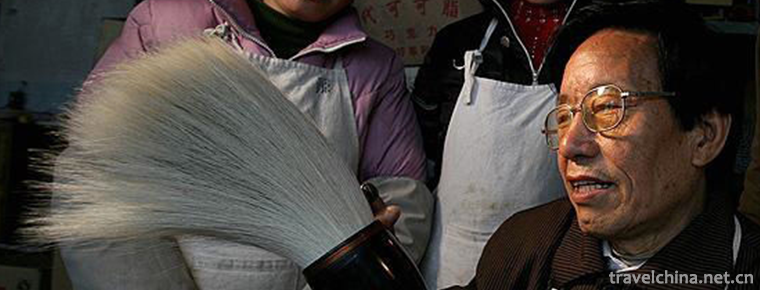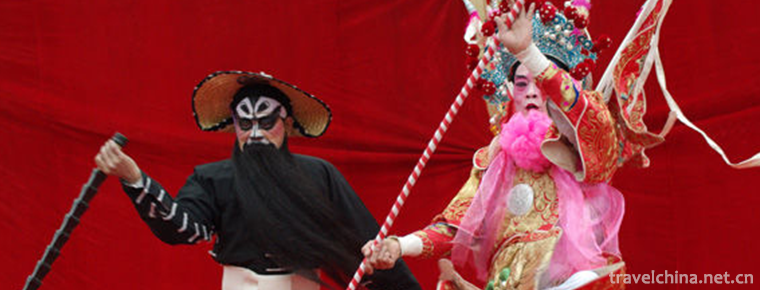Badachu Park
Located at the south foot of Beijing's famous Xishan scenic spot, Badadu Park is a national AAAA-level scenic spot. It is the first batch of key cultural relics protection units in Beijing after the founding of the People's Republic of China. It is a mountain Buddhist temple garden with a long history, a well-known and pleasant geomancy.
Eight major parks are surrounded by Cuiwei Hill, Pingpo Hill and Lushi Hill, three mountains are like seats, eight ancient temples are scattered among the three mountains, and the natural "twelve landscapes" are even more famous. The ancients praised the "three mountains are like Huawu, eight temples are like antiques in the house, twelve sceneries are like outdoor gardens" and the cloud "the beauty of Xiangshan lies in man-made, and the beauty of eight major places is in the house." In nature, its natural beauty is more than that of the western mountains.
The eight major parks are famous for the two Lingguang temples offering sacrifices to the rare Sakyamuni Lingyu Sari in the world. In recent years, the wall of the "Panopoly-Mido Heart Sutra" built successively in Lingguang temple, 500 Luohan reliefs and Buddha-Tooth Sari have formed the perfect unity of Buddha-Buddhist monks and Dharma-Buddhist monks. The eight oldest temples in the eight ancient temples are the eight Zhengguo temples. They were built in the late Sui and early Tang Dynasties. They were built in the Song, Yuan, Ming and Qing dynasties. The largest temple is the Xiangjie Temple of Emperor Xinggong of Kangxi and Qianlong. Although Badazhu Park was named after eight ancient temples, the discovery of the Ming Dynasty cliff stone carvings in 2000 stirred the capital with the ninth place of the eight places, attracting stone carvings enthusiasts and many Buddhist believers.
Eight Parks are warm in winter and pleasant in summer. The soil is rich in vegetation.
Eight ancient temples in the garden were first built in the late Sui and early Tang Dynasties, and were built through the Song, Yuan, Ming and Qing dynasties. The five temples of Lingguang, Chang'an, Dabei, Xiangjie and Shengguo were built by the emperor. In the Liao Zhaoxian Pagoda of Lingguang Temple, Sakyamuni Buddha's Tooth Shrine was sacrificed. It was destroyed in 1900 by the artillery fire of the Eight Nations Union Army. After the founding of the People's Republic, it was approved by Premier Zhou Enlai to build a new Tooth Shrine Pagoda.
At the end of the 1980s, Yingcui Lake was the scenic spot of the park water body. Ten years of reform and development, the eight major areas are not the same as before, and have become the first class parks in Beijing. With the coming of the new century, the park will build new space capsules and conference centers, introducing new concepts of integrated services of food, housing, travel, recreation and health care. To meet the various needs of tourists at different levels of consumption, the eight major parks have become one of the nearest leisure and entertainment places in Beijing.
Natural scenery
The eight major parks are situated in the west of Taihang, between Cuiwei, Pingpo and Lushi (also known as Hutou Mountain in the west, Qinglong Mountain in the East and Cuiwei Mountain in the north), with a square area of 332 hectares and a peak of 464.8 meters above sea level. The three mountains are surrounded by a huge Taishi chair, forming a unique winter warm and summer cool microclimate in eight places. Thanks to this unique microclimate, the natural scenery in eight places is beautiful and moving. The scenery in four seasons is picturesque: in spring, apricot blossoms, peach blossoms, spring greeting, forsythia and so on are blooming all over the mountains, clustered and beautiful; in summer, mountains and peaks are verdant, elegant and elegant. In autumn, more than 100,000 Red-leaf tree species, such as Quercus alba, Torch, Acer truncatum, etc., were found to be beautiful after the autumn frost. In winter, silver-coated trees were covered with snow agglutinin. The park is rich in soil and vegetation, with a forest coverage rate of 97.2%.
Eight major parks are surrounded by three mountains, named for eight well-preserved ancient temples, and famous for their natural "twelve sceneries". The ancients praised "three mountains are like Huawu, eight temples are like antiques in the house, twelve sceneries are like gardens outside the house", and clouds "the beauty of Xiangshan lies in man-made, the beauty of eight major places lies in nature, and its natural beauty is more than the beauty of Western Hills".
Garden Plants
Eight Parks are warm in winter and pleasant in summer. The soil is rich in vegetation. Among them, there are more than 80 kinds of trees, more than 400,000 trees, 18 precious ancient trees, 590 trees, white pine in Chang'an Temple, Seven-leaf trees in Lingguang Temple, ginkgo trees in Dabei Temple and Coptis chinensis in Shengguo Temple, which are all over 600 years old, still full and beautiful. Nearly 140,000 mangrove trees, such as Quercus alba, Torch tree and Acer truncatum, were dyed with forest after the autumn frost.
Park attractions
A Chang'an Temple
Chang'an Temple is located more than a mile south of the park gate. Founded in the seventeenth year of Hongzhi in the Ming Dynasty (1504), the original name is Shanying Temple. After two renovations in the years of Shunzhi in Qing Dynasty (1659) and Kangxi (1671), Chang'an Temple was renamed as Chang'an Temple. The Chang'an Temple leans on Cuiwei Mountain, sits West to east, surrounded by red walls, two into four. The entrance is a brick and stone wall with four words of "climbing with joy". Walking along the west-bound Yonglu Road, climbing dozens of steps for the temple gate hall. In the hall, Guanyu statues are made for Guan Yu, also known as "Guan Gong Dian". Backwards are "Daxiong Palace" and "Dashi Palace". The two white bark trees in front of Dashi Palace are particularly eye-catching. Although they have gone through hundreds of years of vicissitudes, they still have flourishing branches and leaves, and occupy a place among the famous ancient trees in Beijing. Chang'an Temple was once a famous temple in Xishan. The original 500 Luohan statues in Chang'an Temple are now extinct. According to the historical data of Wanli in the Ming Dynasty, there are still "four pines in the temple" most peculiar to Chang'an Temple. Menlie Tianbing 10, very strange shape, Luxia has a "500 Arhats" record, from which we can see the status and style of Chang'an Temple. Chang'an Temple was destroyed during the "Cultural Revolution" and has not yet been restored to its original appearance. It is not open to the outside world for the time being.
Two Lingguang Temple
Lingguang Temple is the most important monastery in eight places. Founded in the Tang Dynasty (766-779), it was initially called "Longquan Temple". It was renamed "Jueshan Temple" in Jin Shizong's reign (1162). It was restored to the old name of Longquan Temple in Ming Xuande's reign (1428). It was expanded to "Lingguang Temple" in Ming Orthodox reign (1436-1449).
The Lingguang Temple is facing southeast. In the temple, a statue of Sakyamuni Buddha with bronze tires and gold placement is worshipped, weighing 3300 kg. A gift for the Thai monk king. In Lingguang Temple, there are only three courtyards, namely "Great Pessimism Courtyard", "Fishpond Courtyard" and "Tower Courtyard". In the Great Pessimism Courtyard, there are Guanyin Hall in the South and Buddhist worship hall in the north. There are fourteen accompanying rooms in the East and the west. There is a goldfish pond in the southwest of the courtyard. It was built in the reign of Qianlong in the Qing Dynasty and expanded in the reign of Xianfeng. It was originally a free-living pond in the temple. There is a tower of Zhaoxian Pagoda in the Liao Dynasty beside the pool, also known as the "Picture Thousand Buddha Pagoda".
The tower was destroyed in 1900 by artillery fire from the Allied Eight Nations. When cleaning up the old pagoda base, monks in the rear Temple found stone letters for Buddha Sakyamuni Ling Ya Shrine. One corridor north is the former Hou You Xuan, the Academy of Residents and the Abbot's College. The present abbot's house has a Buddhist Tooth Shrine Tower built in 1958-1964. It is 51 meters high and has seven layers. On the second floor of the Tazhong Shrike Cabinet, one of Buddha's spiritual teeth was worshipped by the seven pagodas of pure gold (it is recorded that the Buddhist monk of the Southern Dynasty offered a prayer for Buddhism to the west, and Yudan invited him back to offer it to Jiankang in the capital city of the Southern Qi Dynasty, Xi'an in the Sui Dynasty, Xi'an in Daxing today, Beijing in the late Tang Dynasty, and the Pagoda of Zhaoxian in the years of Liao Daozong). In 2000, the Chinese Buddhist Association built the Jade Buddha Hall and the shadow wall of the Prajna Boromido Heart Sutra written by Zhao Puchu, the late president of the Buddhist Association. Because there are only two Buddhist teeth in the world, Lingguang Temple has become a place of worship for Buddhist monks all over the world.
Legend of the Buddhist monk of Zhaoxianta
Legend has it that there used to be a Abbot in Lingguang Temple. After taking over the position of the old abbot, he felt that his practice was almost complete and gradually became lazy. First, he went out to enjoy chicken, duck, fish, mountain delicacies and seafood. Sometimes he brought wine and meat back to the temple. Finally, he played a trick on women and became a genuine flower monk. The abbot's shameless behavior aroused the anger of a fat monk, and then triggered a battle between good and evil.
Fat monk forced the abbot to obey, sitting in the mountain gate for three days. The Abbot knew that he was not an opponent. He dared not stay any longer. Thirty-six plans were to go up. After he left the temple, he trotted all the way to the top of the flat hill without much effort. The fat monk was not an idle person. He immediately chased after him and soon found the abbot's whereabouts. He took off the thirteen treasure whips from his waist and ran to the top of the hill. He shouted in his heart, "Look at it!" The Abbot disappeared long ago when he heard a loud noise, landslides, cracks and boulders flying. Black air is rolling over the hilltop on the flat slope, which lasts for a long time and is gloomy and terrible. The fat monk knows that the evil abbot's body is dead, the evil spirit still exists and the ghost wanders uncertainly. So he turned back to the temple and took out a small box from his bosom and handed it to the abbot, saying, "This is a treasure, which can avoid and eliminate disasters. If you encounter disasters in the future, you should put it in a flat place, burn three pillars of incense, and then repeatedly call three"God's whip Taibao", and I will come." After that, he drifted away.
The evil abbot's ghost floated
for ninety-eight-one days, attached to his rotten white bones, and practiced
again, and became a white bone essence. Again, he did evil deeds. Young women
around Lingguang Temple are either dead or missing. There were nobody who could
find any of the eminent monks in the government and monasteries.
One day, the little monk suddenly remembered the little treasure box left by the fat monk. He said to the abbot that the abbot thought it was a way. That night, when it was too dark to see five fingers, the abbot led the monks to the courtyard, placed the casket in a flat place beside the goldfish pond, lit three pillars of tall incense, and when it was burning out, the monks called out three times in succession, "God's whip is too safe!" Suddenly, the eastern sky emitted a million rays of sunshine, shining brightly on the earth, followed by a thunderbolt explosion. The monks looked up and saw a fat monk standing in the air with his foot on the auspicious clouds and a treasure whip in his hand. All of a sudden, the rocks rolled, and a black gas rushed out of the rocks to plump monks. The fat monk shook the treasure whip and entangled the black gas. Sound loud, the black gas disappeared, a white bone instantly into ashes. Look at that mountain again, the gloomy strange stone disappeared, the mountains were green and green trees, leaving only a small stubborn stone, looking like a tiger's head from afar.
Besides, the monk surrendered the white bone essence and came down to the monks, explaining the truth of the matter. Then the abbot asked, "What shall we do if this kind of thing happens again in the future?" The fat monk answered, "Don't worry. If you leave this whip in the temple, you can suppress evil spirits." After that, he threw the whip into the air, whistled and revolved, radiating thousands of golden rays. Thirteen sections of the whip turned into a thirteen-storey pagoda. The casket slowly rotated on the ground and emitted seven colors of light, turning into the base of the pagoda. The body of the pagoda falls impartially on the base of the pagoda. Suddenly, the auspicious clouds over the pagoda shroud and the fairy music floats. Since then, people have called the pagoda Zhaoxian Pagoda. It is said that as long as Zhaoxian Pagoda does not collapse, evil can no longer rise.
After the founding of New China, the Chinese Buddhist Association, with the support of state funding, built the Buddha's Tooth Shrine Pagoda in two northern monasteries of Lingguang Temple. The new pagoda is 51 meters high, with thirteen stories of octagonal eaves. The Buddha's teeth are enshrined in the seven pagodas in the pagoda hall. On June 25, 1964, the Chinese Buddhist Association held the opening ceremony of the Buddhist Tooth Shrine Pagoda in Lingguang Temple.
Buddhist Tooth Shari is a sacred relic of Buddhism and a precious cultural relic of our country. Many foreign heads of state, especially leaders of Southeast Asian countries, often come here to worship and pay tribute to Buddhist Tooth Shari.
There are two couplets in front of the tower. One said: "Nine circles of living beings from the pure land of eternal life, can not be rounded into Buddhist Taoism; ten Buddhist sacrifices chant Buddhist Dharma, can not be sprouted under Puli group." One said, "The Dharma body is permanent, shining and glorious forever; the relics should be true, and the holy places should be left forever for all to live."
Three Sanshan Nunneries
Sanshan Temple is named for its location between Cuiwei, Pingpo and Lushi Mountains (Hutou, Cuiwei and Qinglong). Sanshan Temple was founded in Jintiande three years (1151) and rebuilt in Qianlong. There are three halls in the mountain gate, just opposite the mountain gate. There are five halls in which Sakyamuni statues are offered. During the reign of Yongzheng and Qianlong in the Qing Dynasty, there was a great monk, Datiantongli, who used to grind Zen Buddhism here. Writing a book and making a comment is well-known for a time.
Dabei Temple
Dabei Temple is located on the hillside between Sanshan Temple and Longquan Temple. Legend has it that it was built in the Northern Song Dynasty or the Liao and Jin Dynasties (about 1033) with the original name of "Silence Temple". The temple sits in the West and faces the east. There are two ancient catalpa trees directly opposite the mountain gate. The whole courtyard is three-in-four-in-one, and the Mountain Gate hall has a stone amount of "building Dabei Temple", which is the imperial pen of Emperor Kangxi of the Qing Dynasty. There are four statues of Heavenly Kings in Shanmen Hall. Behind the Shanmen Palace is the Daxiong Palace. There are two pools of ancient bamboo in Ming Dynasty in front of the palace, green and dripping. In the middle of the hall, the third Buddha is offered. The statue of "Eighteen Arhats" on both sides is legendary work of Liu Yuan, a famous sculptor in the Yuan Dynasty. The statues have different shapes. They are deep and lifelike. The statues are carved from Sandalwood flour and fine sand, and still emit the fragrance of winding beams. Behind the Daxiong Palace, there is a statue of Guanyin Bodhisattva sitting in the Yuantong Palace. The first two ancient Ginkgo biloba trees in this hall are several circles thick, with lush branches and leaves. They are over 800 years old.
Five Longquan Nunneries
Longquan Temple, also known as Longwangtang, is located in the northwest of Dabei Temple. Ming Renzong Hongxi Yiji (1425) began to build "Huiyun Zen Forest". In the second year of Shunzhi Qing Dynasty (1645), a clear spring was discovered and a Dragon King Temple was built. During the reign of Qingdaoguang, the two places merged into one. They were Longquan Ancient. There are five courtyards, which are divided into upper, middle and lower levels. Apart from the main palace, the Dragon King Hall, there are also sleeping pavilions, listening to spring pavilions, Miaoxiang Court and Huazu Court. The whole courtyard of pine and cypress giant, such as cloudy days, summer cool abnormal, extremely suitable for summer. The gate of this temple is small. When entering the gate, one side of the pond is obtained. Spring water continuously flows out from the Longkou of the pond and into the pond. The spring is called "Longquan" and never dries up at any time. The spring water has been tested as natural high strontium mineral water. On the left of the pool, there is Xiao Xie of Yinquan. Above it is the Dragon King Hall; the North Court was formerly called Huiyun Temple. The Longquan Tea Club has a long history and great influence in Beijing. It is open all the year round. The famous tea brewed by Ganxian Spring has a special taste. There are many returnees, especially in summer and autumn.
Reasons for Building Longquan Tea Club
There is a pond in Longquan Temple. The water in the pond is clear, and you can see the bottom directly. You can even see the stones and coins at the bottom of the pond without any dirt. The water in the square pond is very delicious. It tastes sweet, and the tea brewed has a delicate fragrance. The water in the square pond is rich in minerals, which is also helpful to the human body. In addition, in the eight places, only the spring water of Longquan Ancient Temple has been flowing continuously and continuously. In addition, the environment of Longquan Temple is very quiet, surrounded by mountains, flowers, trees, and sometimes birds are singing. When the travelers are tired of climbing the mountain, they can rest in the tea house and enjoy the surrounding scenery.
Six Xiangjie Temple
Xiangjie Temple, located in Pingpo Mountain, is the largest temple in eight places. Founded in the Tang and Qianyuan Dynasties (758-760), it was called "Pingpo Dajue Temple", "Dayuantong Temple" in the Ming Dynasty, and "Shenggan Temple" in the Kangxi Period of the Qing Dynasty, and changed to its current name in the Qianlong Period of the Qing Dynasty. The Xiangjie Temple, sitting in the north and facing the south, is a magnificent and magnificent place for emperors of all dynasties to visit mountains. The temple is divided into three roads, left, middle and right, with a total of five entries into the courtyard. On the middle road, there is a stone hanging above the Mountain Gate hall, and the upper clasp "Jianxiangjie Temple" is called "Longsong" because the ancient pine twigs circle in the second entrance courtyard and show their teeth and claws. There are also bells and drums on the second floor. The latter is the Temple of Heavenly Kings, which has three broad faces and four heavenly kings, Chebye monks (big belly Maitreya Buddha) and Wei Pian. Up the stairs there are five main halls, the famous Yuanxiong Palace, and two stone tablets in front of the palace. Among them, the left stele is engraved with the "Great Sadness Bodhisattva self-fax image", which is said to be the ancient Tang Dynasty stele unearthed during the reinvention of temples in Kangxi. Inscribed on the stele Yin is the word "Respect Buddha", as big as Hongdou, which is the imperial pen of Kangxi. The pattern of the four-entry courtyard is similar to that of the three-entry courtyard. The main hall is the Daxiong Palace for the third Buddha and the eighteen Arhats. The fifth courtyard is the Tibetan Sutra Building. The left road is a separate courtyard with only three rooms. The right road is "Xinggongyuan", which is the summer resort of Emperor Qianlong. It has a good built-in view.
Legend of Buddhist Monument
One morning, Emperor Kangxi was walking in the courtyard. He moved his steps along the leaping figure of the cuckoo. Suddenly, his feet were soft and he knelt down. Kangxi felt the pain of his knocked knee, and the courtyard was full of land, so he ordered people to dig to see what was buried in the ground. Four or five followers rushed to find tools to dig. At first, the followers had no harvest, but they could dig, and suddenly dug out a stone tablet. The tablet is carved with the self-facsimile image of the Great Sadness Bodhisattva. The image is carved with relief and line carving combined with knife method. It has a unique style. Emperor Kangxi was very happy to see him. He ordered the eunuch to prepare his pen and ink, splash ink and write down the two powerful characters of "Respecting Buddha" in the stele Yin, and ordered people to stand it in front of the temple. According to the textual research of the experts concerned, it is confirmed that the tablet is a treasure left over from the Tang Dynasty. Visitors to the eight places can not help asking about the origin of the Buddhist monument when they see it, so the legend of the Buddhist monument has been spread.
Seven jewelry caves
Baozhu Cave is located on the top of Pingpo Mountain. It was founded in the forty-sixth year (1780) of Qianlong in Qing Dynasty. There is a wooden archway in front of the temple. The plaque is divided into "strong forest" and "happy place" inside and outside, which is the imperial pen of Emperor Qianlong. Passing through the archway, there was a huge stone beside the road. On the stone, you can see the running book "Poetry of Jewellery Cave", with the Imperial Seal of Qianlong stamped on the entries. The main hall is built on two floors near the cliff of the Baozhu Cave, in which the Guanyin Hall of "Overlooking Xuan" forms a courtyard with the right and left supporting rooms. There is a stone cave behind Guanyin Hall, which is about four meters wide. The gravel inside the cave is black and white and glittering like jewels. Therefore, the cave is named after "jewels". Legend has it that during the reign of Kangxi, there was a cape Zen Buddhist monk who practiced here and was summoned by the emperor many times. It is remembered that he can recite sutras to exorcise ghosts, so he was also named "Ghost King Bodhisattva". In the cave, his body was covered with gold statues, which had been destroyed long ago. Now he is a white marble statue of the Han Dynasty. Above the Jewel Cave is the Amitabha Temple. The original forehead said "Shelun Miaoguo" and the right banner said "Clouds lying in the sky to peep", all of which were Qianlong Imperial Pens. Seven places are the best places to view the beautiful scenery of Beijing and enjoy the sunrise, so they are known as "Xiaotaishan in the west of Beijing".
Eight Chengguo Temple
Shengguo Temple is the oldest temple in the eight monasteries. Unlike two to seven places on the same mountain, eight places are located on the mountainside of Lushi Mountain (Qinglong Mountain). It was built in the Tang Dynasty (also in the Sui Dynasty). An ancient Coptis chinensis tree in the temple is over 600 years old and unique to the capital. There are two monuments in the north and south of Shengguo Temple, the mountain gate, which is located on the hillside of Lushi Mountain. There are dozens of steps in the mountain gate. The stone frontal inscription above the vertical step bears the words "the ancient temple and the Shiguo Temple", which is the imperial pen of the Ming Yingzong Emperor. There is a deep pool on the left side of the mountain gate, named Qinglong Pool, which is legendary as the place where Qinglong appears and disappears. To the north of Shanmen, Tianwangdian Hall and Daxiong Palace are built. They enter the courtyard in two ways (the second is changed into a private club and can not be visited). There is a copper bell in front of the Daxiong Palace. It was cast in Chenghua, Ming Dynasty (1470). The bell body has the meaningful words "Mahabharomo Boromi Heart Sutra" and is well-cast. The West Crossing Courtyard is Zen Courtyard. There is a courtyard west of Daxiong Palace. The gate of the courtyard is in the shape of a vase and made of bluestone. Out of the west gate of the courtyard, there is a double eaves octagonal pavilion. The north of the pavilion is a large and spacious building with wooden plaques hanging inside and inscribed with the words "Zhaozhi Pavilion". Insert a stele under the plaque, engraved on the "Secret Cliff Zhaozhi Pavilion Records". To the north of Changxuan is the secret cliff. Here a boulder rises from the top of the mountain, abrupt and dangerous. The four words "natural valley" are engraved on the stone. There is a hole beside it, named "Zhenwu Cave". According to legend, there is monk Lu practicing here. Because he prayed for rain for the people and had experience, the Emperor gave him "Induction Zen Master".
Other attractions
Glacial boulders
On the way to the Xiangjie Temple, there is a glacial debris, which has been formed for 1 million to 2 million years. In 1962, geologist Li Siguang discovered this glacial drift gravel, which was identified as Quaternary glacial drift gravel, and inscribed in memory. In 1964, the pavilion was built for protection.
Cliff Valley
On the way to Chengguo Temple, you can visit the Cliff Valley, which has several Ming Dynasty stone Buddha statues. Because of its steep terrain, covered by vegetation and rare visitors, it was not discovered until 2001, and opened up as a scenic spot, known as "nine places".
Sightseeing route
Eight major parks are one of the most suitable places for mountaineering in the suburbs of Beijing. With thousands of years of historical and cultural precipitation, rich and precious natural resources, the unique microclimate formed by "Three Mountains Encircled" and not too high or too low mountain topography, the eight major parks have become the preferred place for mountaineering and fitness of the people in Beijing. In 2001, Beijing Sports Bureau formally established eight major parks as one of the four best mountain climbing fitness places in the city after a comprehensive survey of height, mountain potential and mountaineering environment. In recent 2001, according to its own mountain form and landform, Badazhu Park has launched four lines of mountain climbing and fitness: walking along temples, running on avenues, visiting "stone carvings" to seek seclusion and explore, and sightseeing seals to breathe oxygen among forests.
Mountaineers can choose different mountaineering routes according to their physical condition to achieve the purpose of mountaineering fitness. Various new and rich fitness signs are designed to guide you how to mountaineer scientifically. To meet the different needs of tourists, more than 100 pieces of fitness equipment have been installed along the mountain climbing in eight major parks, covering an area of nearly 4000 square meters, for free use by tourists. In addition, two gymnastic trails paved with pebbles, tennis courts, badminton courts and so on have been built. The Beijing Organizing Committee for the Olympic Games has designated eight nearby parks as mountain bike training venues for the 2008 Olympic Games. In the future, the functions of sports and fitness in the eight major parks will become more and more obvious.
Tourist guide
Recommended attractions
China's first inkstone: originally known as "Chinese soul giant dragon inkstone". Alexandrite texture, 11.8 meters long, 3.2 meters wide, 1.2 meters high, weighing about 45,000 kilograms. The design is exquisite, the sculptor is superb, the implication is broad, has the extremely cultural, the art, the appreciation value.
China Fine Seal Valley: The first valley in Chinese history to systematically display Chinese seal culture in the form of stone carvings. From Yin Shang Dynasty to Ming and Qing Dynasty, thousands of famous ancient Zhang stars are on natural rocks, and they are in the valley, which is interesting.
Cliff stone valley: Located on the opposite cliff of Shinguo Temple, the core landscape is the three niches of Ming Dynasty cliff stone Buddha statues, like those made during the Ming Dynasty "extermination of Buddha", behind which there are many little-known stories.
traffic
Buses: 347, 389, 598, 598, 972, 958 terminus. No. 489 will be at Badadu South Station as soon as it gets off.
Metro: Jishuitan, Xizhimen, Zoo, Baishiqiao transfer 347, Yuquan Road transfer 389, Bajiao Amusement Park transfer 598, 598, Gucheng Station transfer 958, Apple Garden Station transfer 972, Haidian Wuluju Station transfer 489 can reach eight parks.
Self-driving: Xiwuhuan Road, under the exit of the Eighth Section, is about two kilometers along the Eighth Section Road; or Xisi Ring, under the exit of the Four Seasons Green, along Xingshikou Road to the Eighth Section Road. No more than 100 meters from the gate area, there are three parking lots, a total of 1200 parking spaces.
Tickets for scenic spots
Park tickets: 10 yuan for ordinary tickets / 5 yuan for discount tickets / person
Cableway ticket: 50 yuan per person
Slide ticket: 60 yuan per person
Slip ticket: 30 yuan per person
China Inkstone Ticket: 3 yuan per person
Ticket concessions and measures
1. Retired personnel, active servicemen's vouchers and children under 1.2 meters are exempted from tickets.
2. College, middle school and primary school students (excluding adult education and graduate students) buy student tickets with valid certificates.
3. Older people and those who hold social security certificates buy half-price tickets.
4. Selling monthly tickets from 28 to 5 next month.
Park monthly ticket: morning exercise monthly ticket 15 yuan per person (before 7:30 a.m.)
All-day monthly ticket 30 yuan per person
Park Annual Ticket: Morning Exercise Annual Ticket: 100 yuan per person (before 7:30 a.m.)
All-day annual ticket: 150 yuan per person
(For annual and monthly tickets to parks, one must take a 2-inch personal photo with no crown. The annual and monthly tickets are invalid when there are large-scale garden activities and the first day of the first lunar month held by the park.




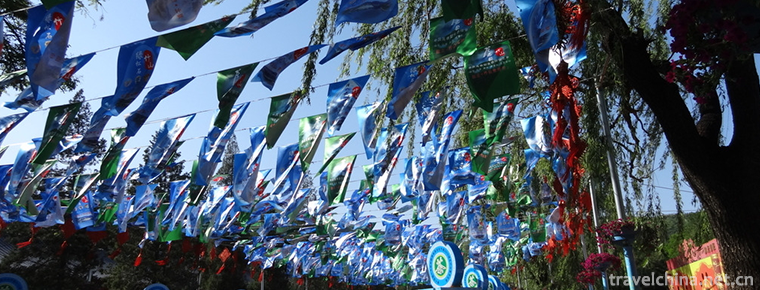
-
Tiantan Park
No. 1 donglijia, Tiantan, Dongcheng District, Beijing, China.
Views: 428 Time 2018-10-02 -
Alipay
Alipay (China) Network Technology Co., Ltd. is the third party payment platform in China. It is committed to providing a simple, safe and fast payment solution.
Views: 219 Time 2018-11-13 -
Shapotou National Nature Reserve Ningxia
Shapotou: National AAAAA class tourist attraction, national desert ecological nature reserve, global environmental protection 500 best units, national fitness 20 famous landscapes, special prize for s.
Views: 96 Time 2018-12-12 -
Youyang Peach Blossom Source Tourist Scenic Area
Taohuayuan Scenic Spot is located in the suburbs of Youyang County, which is known as the "Liangdu of Chongqing". It is a national AAAAA-level tourist attraction.
Views: 268 Time 2018-12-12 -
Longtan Ecotourism Resort
Lianzhou Longtan Eco-tourism Resort is a tourism project invested and constructed by Lianzhou Aidi Tourism Development Co., Ltd. of Qingyuan City. Based on the original Huangchuan .
Views: 141 Time 2019-01-19 -
Tanggu Dagukou Battery Site Museum
Dagukou Battery Site Museum is located on both sides of the Haihe River estuary in the southeast of Tanggu, Tianjin Binhai New Area. It is a national education and youth education .
Views: 154 Time 2019-02-13 -
North Road Bangzi
Bangzi, also known as Shanglu Opera, is a local traditional drama in Datong, Shuozhou, Xinzhou and parts of Inner Mongolia and Hebei in northern Shanxi Province. It is one of the national intangible c.
Views: 152 Time 2019-04-04 -
Kazakh Costume
Kazakh people are characterized by pastoral nomadic culture. Their clothes are easy to ride. Their national clothes are mostly made of sheep's skin, fox's skin, deer's skin and wolf's skin, reflecting.
Views: 213 Time 2019-05-02 -
Xuanbi Production Skills
Xuanbi has a long history. Originated in the Qin Dynasty, it flourished in the Tang and Song Dynasties. At the end of Song Dynasty and the beginning of Yuan Dynasty, there were frequent wars, and the .
Views: 143 Time 2019-07-09 -
Guangxi drama
One of the local operas of the Zhuang nationality in Guangxi. Yongju Opera belongs to the Pihuang Vocal Tune System, which originated in Hunan. It was formerly called Guangju Opera, Old Opera, Local O.
Views: 166 Time 2019-07-14 -
Social security in Luzhou
By the end of 2017, the total number of participants in basic endowment insurance in Luzhou city was 2662800, an increase of 130700 compared with the end of the previous year. At the end of the year, 1031700 people participated in the basic endowment insurance for urban employees.
Views: 332 Time 2020-12-14 -
Nanchong cultural undertakings
By the end of 2019, Nanchong has 10 cultural centers, 242 cultural stations and 10 public libraries. There are 8 museums, 28 cultural relics protection and management institutions, 18 national key cultural relics protection units, 112 provincial-level cultural relics protection units.
Views: 297 Time 2020-12-17
